Zach Bell, Yale University
Failure is hard to swallow in any context, but for a baker, this translates literally… a failure is actually difficult to choke down. A few days ago, I failed to bake an edible Linzer Torte. What should have been a buttery raspberry pastry ended with a texture best described as bizarre. Although many a mentor has told me, “Do not be afraid to fail!”, I cannot deny my totally rational fear of that monstrous Linzer Torte.
The trouble began with the dough. I immediately sensed something was off when the recipe called for finely ground almonds. I wondered how finely this meant, and after several minutes of deliberation, I settled on “little pieces”. This meant that the flour to fat ratio in the pastry would be one cup of flour to one cup of fat (two sticks of butter). This seemed a bit strange to me at the time, considering that a very flaky pie dough calls for a three to one ratio. But I ignored my intuition and forged ahead, reasoning that of course it would seem strange, I’ve never made a Linzer Torte before, and some dessert deity would look down on my youthful arrogance for questioning the grand pastry plan.
So I made the dough and rolled it into a ball. It stuck to my hands like I had just molded a stick of butter into a ball with chunks of almond in it. In fact, that was pretty much what I had done. After a stint in the fridge, I removed the dough and tried to roll it out using copious amounts of flour to cut the stickiness. This scheme also failed. Then, I noticed I did not have a shallow cake pan, which allows for the density and thin width of the torte. I thought to myself, “What the hell, it’s only Linzer Torte,” and proceeded to use a rectangular loaf pan. This was the death rattle of the torte, as I desperately tried to make a thin layer out of the butter pancake, aka the dough. On went the layer of raspberry jam. Then another layer of dough, because now it was a triple layer Linzer Torte. That old-school lattice top had to go… I was innovating!
Wiping the sweat off my brow from the ordeal, I shoved the globular mass into the oven. Thirty minutes later I took it out (which was stupid because I had doubled the depth and kept the same time and temperature. Apparently, I thought that would work out. I was wrong) and felt a glimmer of hope at the crispy top. Perhaps this mistake riddled enterprise would turn into a delicious raspberry jam cobbler. Clearly I was delirious thinking that a raspberry jam cobbler would be a good idea.
The moment of truth came when I turned the pan over, hoping the dessert would plop right out on to the plate. Alas, this too was not to be. I ended up scooping out the Linzer Torte thing with a spoon. The result looked like a dubious cobbler from the cafeteria line. Fork crunching over the top layer I again felt the hope rising like a white mote of light hovering up from Pandora’s box. Then I bit into the uncooked butter mingling with gritty sugar and chewy almonds. In its short and terrible life, this creation had foiled me at every turn. Yet, as of this moment, a few days later, I have not died from salmonella due to the undercooked eggs in the dough. My various mentors also say, “Pain is weakness leaving the body.” I hope that saying does not only apply to physical pain because this Linzer Torte debacle falls into the “emotional and spiritual” pain category.
I did learn my lesson from this experience though. I learned that finely ground means almond flour. Almond flour would make butter into actual dough. I learned to have the right equipment before I start (the cake pan). Finally, I learned that improvisation and innovation only works when I know what I’m doing in the first place.
This failure was difficult to swallow in more ways than one. Next time, lessons learned, I will do my homework beforehand, and I will make a Linzer Torte, complete with a lattice top.

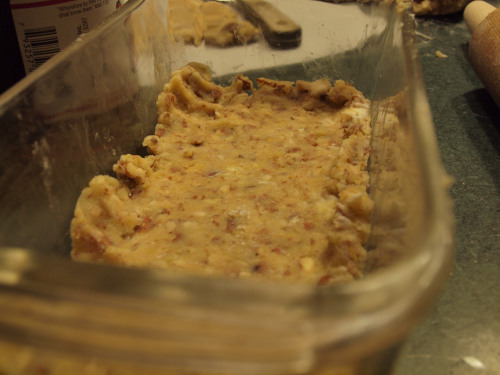
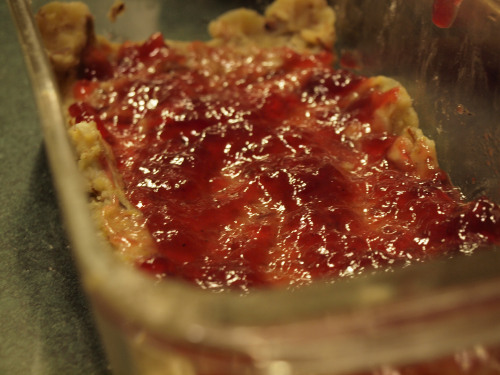
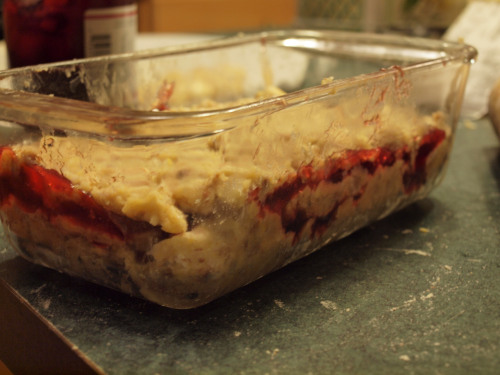
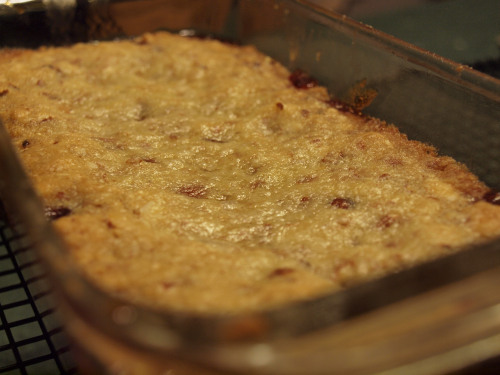
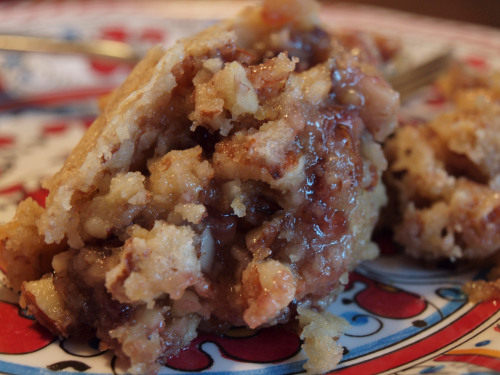
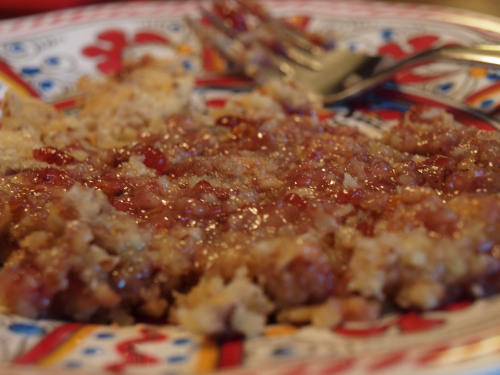

You might want to try a tart shell which incorporates almond paste, rather than ground almonds. You can purchase almond paste in some grocery stores; it you can’t find it, The King Arthur Flour Company sells it. Also, it is essential to use a tart pan when baking a tart. They have a removable bottom which allows you to lift the tart out of the pan. Better luck next time!
Next time I’ll try the tart pan; thanks for the advice!
Oh Zach, I applaud you for sharing your “failure” with us. I’ve totally had days like that where everything just goes wrong. A little research goes a long way. I can’t wait to read about your next Linzer Torte!
It just wasn’t my day haha. I don’t know when my second attempt will be, but I haven’t given up the fight!
Sorry to hear about the problems you had! Sometimes we have to have mess ups in the kitchen in order to become better chefs! :)
Definitely, we learn more from our failures than our successes. And that’s why I wanted to post this. A lot of times you find baking and food blogs where everything is perfect to the letter, where every cupcake is impeccably iced. But real life doesn’t work like that, especially with food. You have to express the imperfection to recognize your successes for what they are.
On your next attempt, use a 50/50 mix of almonds and hazelnuts. Good luck!
thanks for the tip!
SUPER BELATED COMMENT! But here is what went wrong: 1. ground almonds are correct, NOT almond flour, but the texture should be about like coffee grounds, 2. lots of flour on hands/rolling pin/surfaces to deal with the dough, 3. round pan, 4. thinner bottom crust with some kind of side edging to hold the jam filling in place, 5. don’t just do a solid top crust, do strips or some kind of cutouts so that heat can circulate correctly and some of the moisture can cook out of the jam.